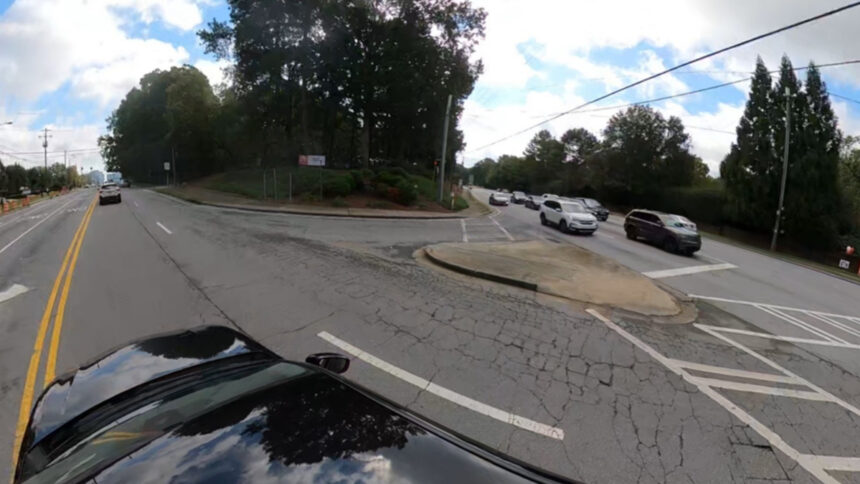Sandy Springs will need to spend $7 million annually to maintain its system of city roadways.
A consultant told the Sandy Springs City Council at its May 21 meeting that the city’s 302 miles of paved roads have a replacement cost of at least $500 million. Those miles don’t include state highways such as GA 400, Roswell Road/GA 9 or I-285.
Proper management of those roads requires ongoing maintenance and rehabilitation of the road network, said Trevor Triffo, founder of MDS Technologies. It also requires a periodic assessment of the road network’s condition, which is what Triffo’s company was hired to complete.
MDS created a database defining all the city’s roads. A software package connected to the database enables them to track inspections and work history. It also includes some budgeting tools to estimate what effect adding funding would have on the road network.
“We also created a three-year rehabilitation program based on pavement condition,” he said.
Road conditions are rated on the pavement condition index (PCI) on a scale from zero to 100. Scores of 85 to 100 are good, with satisfactory being 70 to 85, and fair ranging from 55 to 70. Anything below that is rated as poor, very poor, serious, or failed.
Sandy Springs had 69 percent of its roads rated as good or satisfactory, with 8.9 percent rated as poor or lower when the survey was made in October 2023.
The average PCI is 80.4. Since 2020, that index rose from 79.8 to 80.4 in 2023.
At the time of the survey, Riverside Trace between Heards Creek Drive and Ivy Falls Drive was rated 100 as it was basically brand new with pavement. A localized area of Hammond Drive between Glenridge Drive and the Glenridge/Hammond ramp was rated as serious. It displayed what Triffo said was called alligator cracking. That is created when cars and trucks driving over a road repeatedly drive over the same spot. Over time the road weakens, and cracking occurs that resembles an alligator’s skin.
He said a section of Island Ferry Road between Roberts Drive and the end of the pavement was rated as failing with a PCI score of 10.
“I think the reason that this road hasn’t been fixed in the past is there are very few people who live on this road. My understanding is they don’t really want it paved,” Triffo said.
Surface treatments like crack sealing or coatings can be applied early on to extend the life of the road. Sandy Springs historically has used the mill and overlay process on roads that have deteriorated to a PCI below 65, Triffo said. Bituminous Roadways describes mill and overlay as removing the top 1½ to 3 inches of the 4 plus inches of the pavement and replacing it with new asphalt.











